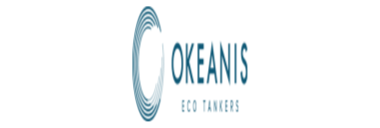RedHill Announces Collaboration with a Leading U.S. Academic Medical Center to Develop Opaganib as a Countermeasure Against Phosgene Inhalation Injury
Rhea-AI Summary
RedHill Biopharma (Nasdaq: RDHL) has announced a collaboration with Duke University School of Medicine to develop opaganib as a potential countermeasure against phosgene inhalation injury. The research aims to advance opaganib into U.S. government-sponsored development under the FDA's Animal Rule pathway to approval.
Phosgene, a toxic chemical used in industrial processes, poses a significant risk to public safety. The EPA has identified 123 sites in the U.S. that could potentially expose millions to phosgene. Currently, there is no approved antidote for phosgene inhalation injury, which can cause severe respiratory damage.
Opaganib, RedHill's novel, host-directed drug, is being developed for various indications, including chemical and nuclear/radioprotection. The collaboration with Duke University aims to determine if opaganib can provide protection against phosgene-induced damage and potentially be stockpiled for emergency use.
Positive
- Collaboration with Duke University School of Medicine to develop opaganib as a countermeasure against phosgene inhalation injury
- Potential for opaganib to advance into U.S. government-sponsored development under FDA's Animal Rule pathway
- Opaganib's potential to be stockpiled for emergency use in case of public safety incidents
- Multiple U.S. government collaborations for chemical and medical countermeasures and pandemic preparedness
Negative
- None.
Insights
This collaboration between RedHill Biopharma and Duke University School of Medicine to develop opaganib as a potential countermeasure against phosgene inhalation injury is a significant step in addressing an unmet medical need. Key points to consider:
- Phosgene is a highly toxic chemical with no current approved antidote, posing a serious public health risk.
- The research leverages the FDA's Animal Rule pathway, which is important for developing treatments for conditions where human trials are unethical or unfeasible.
- If successful, opaganib could become a stockpiled emergency treatment, potentially saving lives in case of industrial accidents or bioterrorism events.
The collaboration's focus on multiple in vivo studies suggests a comprehensive approach to testing opaganib's efficacy. The involvement of a leading academic institution adds credibility to the research. However, investors should note that drug development under the Animal Rule pathway can be complex and time-consuming, with no guarantee of success. The potential market for such a treatment would likely be to government contracts and stockpiling, rather than widespread commercial use.
The development of opaganib as a countermeasure against phosgene inhalation injury addresses a critical gap in chemical safety preparedness. Consider these factors:
- The EPA has identified 123 sites in the U.S. that pose potential phosgene exposure risks, highlighting the scale of the threat.
- Global production of phosgene exceeds 12 million metric tons annually, underscoring its widespread industrial use and the associated risks.
- The lack of an existing antidote makes this research particularly valuable for public safety and emergency response protocols.
The collaboration's focus on developing a treatment that could be stockpiled for emergency use aligns with national security interests. This could lead to significant government contracts if opaganib proves effective. However, the success of this venture depends on the outcome of animal studies and subsequent regulatory approvals, which can be a lengthy and uncertain process. Investors should view this as a long-term, high-risk, high-reward opportunity within RedHill's portfolio.
The collaboration outlines plans for multiple in vivo studies, designed to test opaganib as a potential medical countermeasure to treat phosgene inhalation injury. The collaboration aims to determine whether opaganib can advance into further definitive
Used as a chemical weapon during World War I, phosgene, a toxic, colorless chemical, is today widely used in industrial processes for the manufacture of plastics and pesticides. The
Phosgene inhalation can be extremely dangerous, causing significant, even fatal, respiratory injury. No known approved antidote or reversal agent currently exists, and, if approved, opaganib may provide potential for stockpiling for emergency use in the event of a major public safety incident
With multiple

"Opaganib is currently being tested, by various governmental research bodies, in multiple areas that urgently require new chemical and medical countermeasure therapeutic options," said Dr. Satya Achanta, D.V.M., Ph.D., Assistant Professor in the Department of Anesthesiology at Duke University School of Medicine. "Our research will help determine whether there is a potential protective role of opaganib in limiting damage caused by phosgene inhalation."
"Notably used as a chemical weapon during World War I, phosgene, a toxic, colorless chemical, is today widely used in industrial processes for the manufacture of plastics and pesticides. The
What is Phosgene inhalation injury
Phosgene inhalation injury occurs when someone breathes in phosgene gas (COCl₂), a toxic chemical primarily used in industrial processes. Phosgene has a distinct odor, similar to freshly mown grass or hay. However, only
Today, phosgene use in industry is ubiquitous - being used in the production of polymers, plastics and pesticides. Global estimates indicate that more than 12 million metric tons are produced annually[3]. Despite its widespread use, some regions poorly regulate its production, and concern exists for its potential as a weapon of bioterrorism. Given its severe toxicity and high mortality, research is primarily limited to an Animal Rule pathway to approval, which allows for the use of pivotal animal model efficacy studies to support FDA approval of new drugs when human clinical trials are not ethical or feasible.
The EPA identified 123 sites in
About Opaganib (ABC294640)
Opaganib, a proprietary investigational host-directed and potentially broad-acting drug, is a first-in-class, orally administered sphingosine kinase-2 (SPHK2) selective inhibitor with anticancer, anti-inflammatory and antiviral activity, targeting multiple potential indications, including several cancers, diabetes and obesity-related disorders, gastrointestinal acute radiation syndrome (GI-ARS), Sulfur Mustard exposure, COVID-19, Ebola and other viruses as part of pandemic preparedness.
Opaganib's host-directed action is thought to work through the inhibition of multiple pathways, the induction of autophagy and apoptosis, and disruption of viral replication, through simultaneous inhibition of three sphingolipid-metabolizing enzymes in human cells (SPHK2, DES1 and GCS).
Several
Opaganib has demonstrated antiviral activity against SARS-CoV-2, multiple variants, and several other viruses, such as Influenza A and Ebola. Opaganib delivered a statistically significant increase in survival time when given at 150 mg/kg twice a day (BID) in a United States Army Medical Research Institute of Infectious Diseases (USAMRIID) in vivo Ebola virus study, making it the first host-directed molecule to show activity in Ebola virus disease. Opaganib also recently demonstrated a distinct synergistic effect when combined individually with remdesivir (Veklury®, Gilead Sciences Inc.), significantly improving potency while maintaining cell viability, in a
Being host-targeted, and based on data accumulated to date, opaganib is expected to maintain effect against emerging viral variants. In prespecified analyses of Phase 2/3 clinical data in hospitalized patients with moderate to severe COVID-19, oral opaganib demonstrated improved viral RNA clearance, faster time to recovery and significant mortality reduction in key patient subpopulations versus placebo on top of standard of care. Opaganib has demonstrated its safety and tolerability profile in more than 470 people in multiple clinical studies and expanded access use. Data from the opaganib global Phase 2/3 study was published in Microorganisms.
Opaganib has received several orphan-drug designations from the FDA in oncology and other diseases and has undergone studies in advanced cholangiocarcinoma (Phase 2a) and prostate cancer. Opaganib also has a Phase 1 chemoradiotherapy study protocol ready for FDA-IND submission.
Opaganib has also shown positive preclinical results in renal fibrosis, and has the potential to target multiple oncology, radioprotection, viral, inflammatory, and gastrointestinal indications.
About RedHill Biopharma
RedHill Biopharma Ltd. (Nasdaq: RDHL) is a specialty biopharmaceutical company primarily focused on gastrointestinal and infectious diseases. RedHill promotes the gastrointestinal drug Talicia®, for the treatment of Helicobacter pylori (H. pylori) infection in adults[4]. RedHill's key clinical late-stage development programs include: (i) opaganib (ABC294640), a first-in-class oral broad-acting, host-directed SPHK2 selective inhibitor with potential for chemical and medical countermeasure and pandemic preparedness use, targeting multiple indications with a
More information about the Company is available at www.redhillbio.com / X.com/RedHillBio.
Forward-Looking Statements
This press release contains "forward-looking statements" within the meaning of the Private Securities Litigation Reform Act of 1995 and may discuss investment opportunities, stock analysis, financial performance, investor relations, and market trends. Such statements may be preceded by the words "intends," "may," "will," "plans," "expects," "anticipates," "projects," "predicts," "estimates," "aims," "believes," "hopes," "potential" or similar words and include, among others, statements regarding the potential effects of opaganib in the treatment of phosgene inhalation injury. Forward-looking statements are based on certain assumptions and are subject to various known and unknown risks and uncertainties, many of which are beyond the Company's control and cannot be predicted or quantified, and consequently, actual results may differ materially from those expressed or implied by such forward-looking statements. Such risks and uncertainties include, without limitation: market and other conditions; the Company's ability to maintain compliance with the Nasdaq Capital Market's listing requirements; the risk that the addition of new revenue generating products or out-licensing transactions will not occur; the risk that acceptance onto the RNCP Product Development Pipeline will not guarantee ongoing development or that any such development will not be completed or successful; the risk that the FDA does not agree with the Company's proposed development plans for opaganib for any indication; the risk that observations from preclinical studies are not indicative or predictive of results in clinical trials; the risk that the FDA pre-study requirements will not be met and/or that the Phase 3 study of RHB-107 in COVID-19 outpatients will not be approved to commence or if approved, will not be completed or, should that be the case, that we will not be successful in obtaining alternative non-dilutive development funding for RHB-107; the risk that RHB-107's late-stage development for non-hospitalized COVID-19 will not benefit from the resources redirected from the terminated RHB-204 Phase 3 study, and that the Phase 2/3 COVID-19 study for RHB-107 may not be successful and, even if successful, such studies and results may not be sufficient for regulatory applications, including emergency use or marketing applications, and that additional COVID-19 studies for opaganib and RHB-107 are likely to be required; the risk that the Company will not successfully commercialize its products; as well as risks and uncertainties associated with (i) the initiation, timing, progress and results of the Company's research, manufacturing, pre-clinical studies, clinical trials, and other therapeutic candidate development efforts, and the timing of the commercial launch of its commercial products and ones it may acquire or develop in the future; (ii) the Company's ability to advance its therapeutic candidates into clinical trials or to successfully complete its pre-clinical studies or clinical trials or the development of a commercial companion diagnostic for the detection of MAP; (iii) the extent and number and type of additional studies that the Company may be required to conduct and the Company's receipt of regulatory approvals for its therapeutic candidates, and the timing of other regulatory filings, approvals and feedback; (iv) the manufacturing, clinical development, commercialization, and market acceptance of the Company's therapeutic candidates and Talicia®; (v) the Company's ability to successfully commercialize and promote Talicia® and Aemcolo®; (vi) the Company's ability to establish and maintain corporate collaborations; (vii) the Company's ability to acquire products approved for marketing in the
Company contact:
Adi Frish
Chief Corporate & Business Development Officer
RedHill Biopharma
+972-54-6543-112
adi@redhillbio.com
Category: R&D
[1] https://www.ncbi.nlm.nih.gov/books/NBK589660/
[2] Opaganib is an investigational new drug, not available for commercial distribution.
[3] https://www.ncbi.nlm.nih.gov/books/NBK589660/
[4]Talicia® (omeprazole magnesium, amoxicillin and rifabutin) is indicated for the treatment of H. pylori infection in adults. For full prescribing information see: www.Talicia.com.
Logo: https://mma.prnewswire.com/media/1334141/RedHill_Biopharma_Logo.jpg
SOURCE RedHill Biopharma Ltd.









